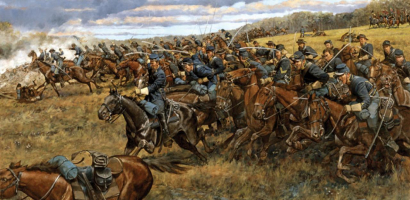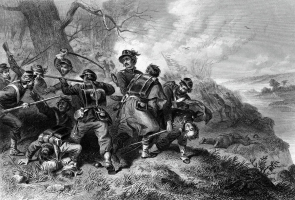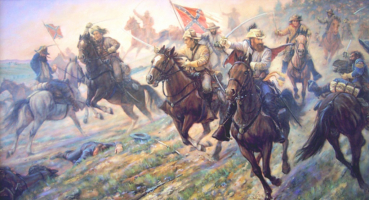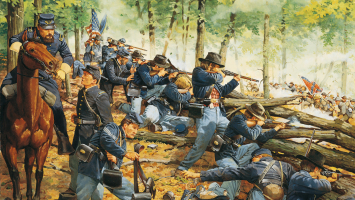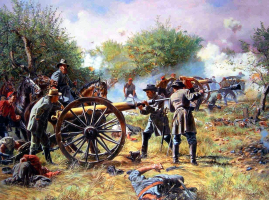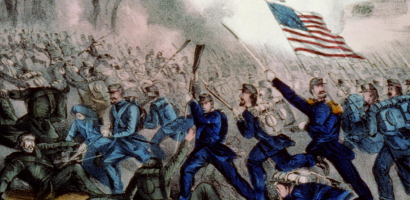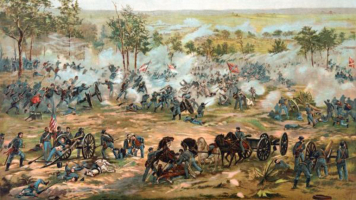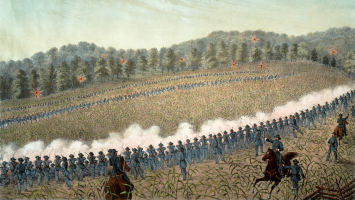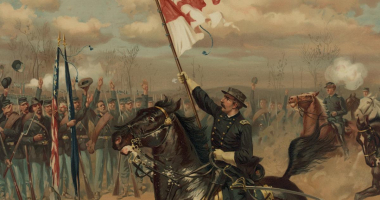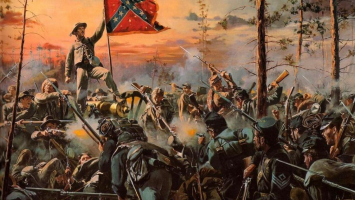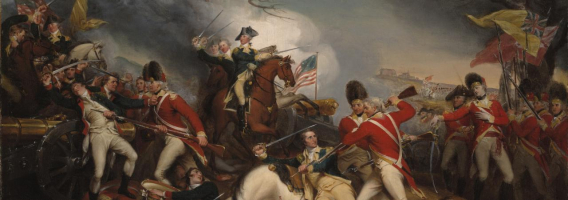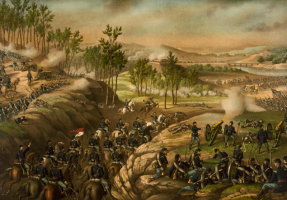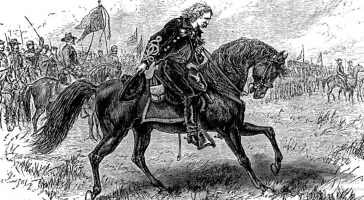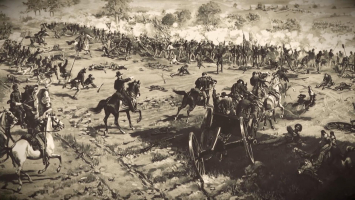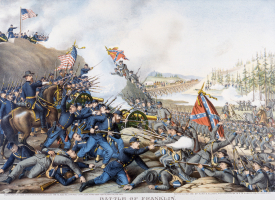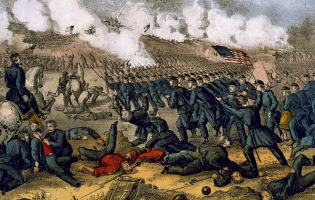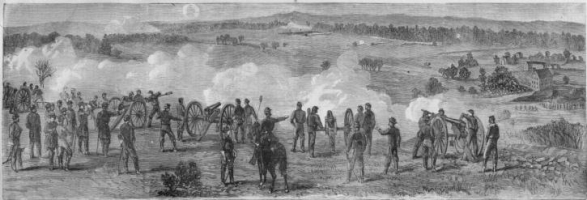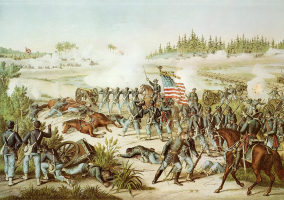Top 7 Facts About The Battle of Chattanooga
The battle of Chattanooga was fought on November 23–25, 1863 during the American Civil War, a decisive engagement fought at Chattanooga on the Tennessee River ... read more...in late November 1863, contributing significantly to the Union victory. Chattanooga was of strategic importance as an important railroad junction for the Confederacy. After taking command of the Mississippi Military District, Union General Ulysses S. Grant fought a series of battles to end the siege of Chattanooga. Expand your knowledge of this battle with this list of facts about the battle of Chattanooga.
-
In September 1863, the Confederate Army of Cumberland was defeated by Confederate General Braxton Bragg at the battle of Chickamauga. The Cumberland army fled to nearby Chattanooga. Bragg followed Rosecrans and took positions on Lookout Mountain and Missionary Ridge, intercepting and blocking Confederate supply lines. The lack of supplies quickly began to take its toll on Union troops. Many of their horses and mules began to die of starvation. A soldier's rations were four hard pieces of bread and a quarter pound of pork every three days. Therefore, here is one of the facts about the battle of Chattanooga.
The Army of the Cumberland was one of the principal Union armies in the Western Theater during the American Civil War. It was originally known as the Army of Ohio. Rosecrans was the first commander of the Army of the Cumberland when it was formed on October 24, 1862. During the battle of Chattanooga, Grant cautiously used the Army of Cumberland in the central engagement, fearing their morale would be too low after the defeat at Chickamauga. The Army of Cumberland was given the small task of capturing the rifle pits at the foot of Missionary Ridge. The coming of heavy October rains and the promise of winter looming reduced the Army of the Cumberland to starvation rations. Wheeler's raid was the funeral pyre of Rosecrans in top command. Three Federal divisions were left without supplies, and the ammunition reserves of the entire army were rendered dangerously low. By mid-October, the Army of the Cumberland was on the brink of starvation.
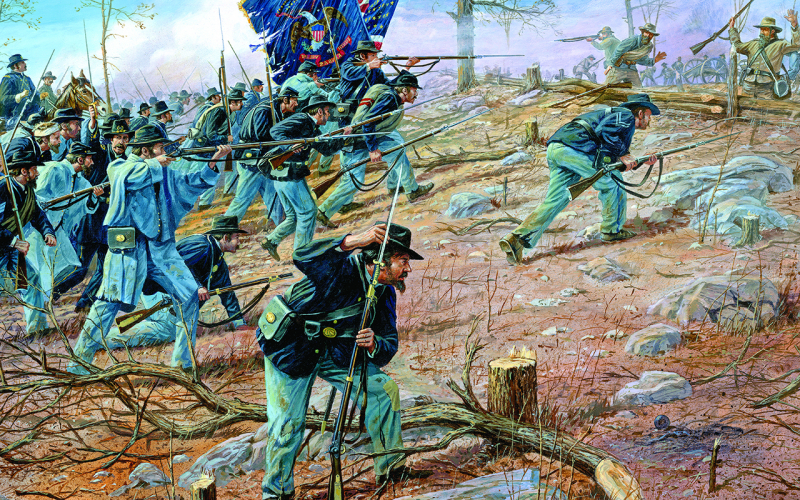
Source: warfarehistorynetwork.com 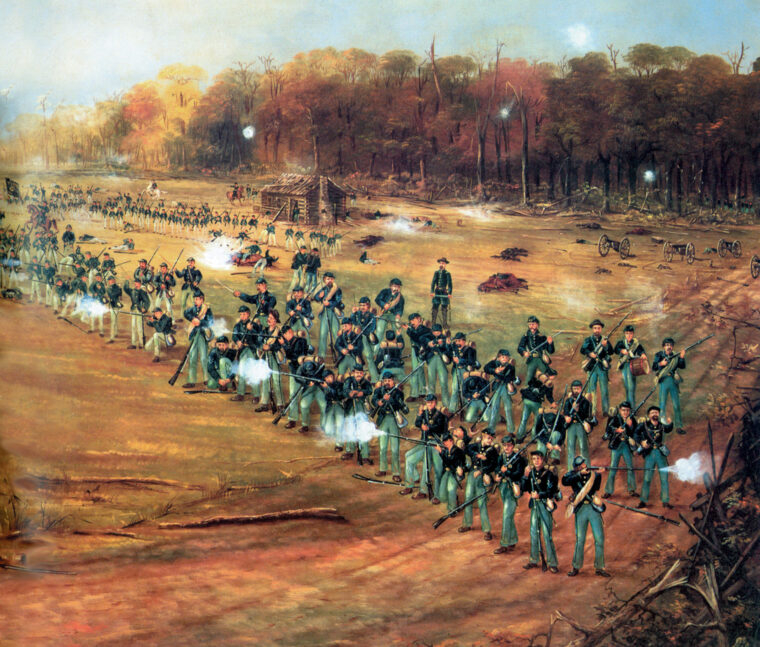
Source: encyclopediavirginia.org -
On October 10, 1863, a month before the battle of Chattanooga, General Ulysses S. Grant met with a secretary of the War Department and was given two nearly identical orders and asked to choose one. Both orders gave him command of the Mississippi Military Division, a new Union Military Division that would rally all armies in the West. One order, however, would keep General William S. Rosecrans in charge of the Cumberland Army and the other would replace Rosecrans with General George H. Thomas. This deserves to be one of the facts about the battle of Chattanooga.
William S. Rosecrans, born Sept. 6, 1819, in Kingston Township, Ohio, US, Union general and excellent strategist early in the American Civil War; after his defeat in the Battle of Chattanooga in September 1863, he was relieved of his command. A graduate of the United States Military Academy at West Point, NY, in 1842, Rosecrans served 12 years as a military officer and then resigned to become an architect and civilian engineer in Ohio and Virginia. Returning to active duty at the outbreak of war, he served under General George B. McClellan and General John Pope, each of whom he succeeded as he moved east with greater orders. During 1862, Rosecrans led Union forces to victory in the battles of Iuka and Corinth, and then moved to Nashville, to take command of the Cumberland Army. He fought well in the battle of the River Stones or the tense but indecisive Murfreesboro.
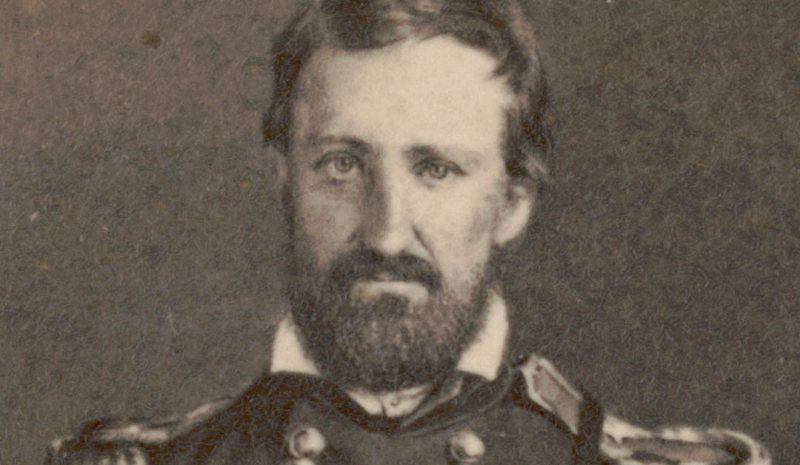
Source: americanhistorycentral.com 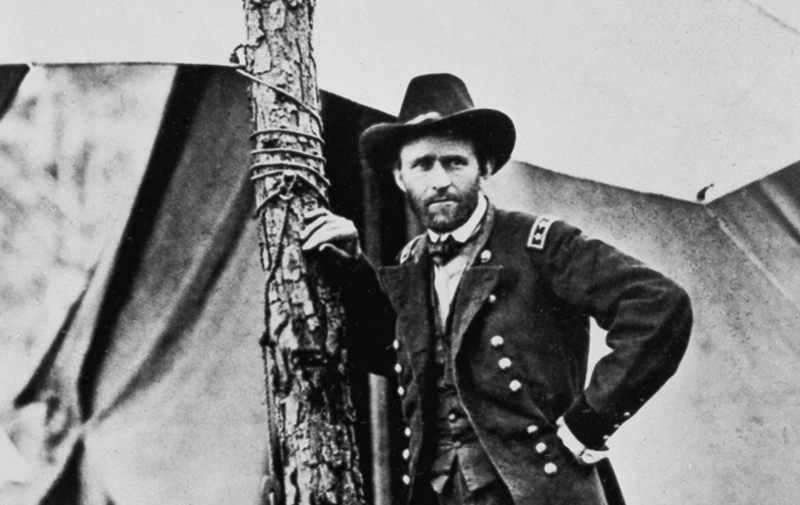
Source: washingtonpost.com -
Regarding the Cracker Line, shortly after arriving in Chattanooga, General Grant was approached by Cumberland Army Chief Engineer, Brig. General William “Baldy” Smith, devised a plan to open a reliable supply line to the besieged armies of the Cumberland Army. The plan was to capture the Brown Ferry across the Tennessee River at Moccasin Point, a site easily accessible to Confederate supply boats. After taking this position, the Cumberland Army was able to connect with upcoming divisions under General Joseph Hooker. On October 27, Union forces easily captured Brown's Ferry, quickly repelling a counterattack from 15 Alabama. Federal supplies began arriving for the starving Cumberland Army shortly thereafter.
The Cracker Line is a Union supply line that was opened by the Army of the Cumberland and elements of the Army of the Potomac on Oct. 27-29, 1863. Fighting took place at Brown's Ferry, Tindale's Hill, Smith's Hill, and Wauhatchie Junction. After this line was opened, supplies flowed from the Union supply depot at Bridgeport, Alabama by wagon road and the Tennessee River to Chattanooga. Cracker Line crossed Tennessee twice on Union Pontoon Bridges – at Brown’s Ferry and at Chattanooga. Hooker's army marched through the Lookout Valley and linked up with Hazen and Turchin at Brown's Ferry on October 28. Thomas' staff began preparing to bring supplies across the Cracker Line and he telephoned. informed Commander-in-Chief Henry W. Halleck that he expected in a few days to be fairly well supplied. As can be seen, the Cracker Line is one of the facts about the battle of Chattanooga.
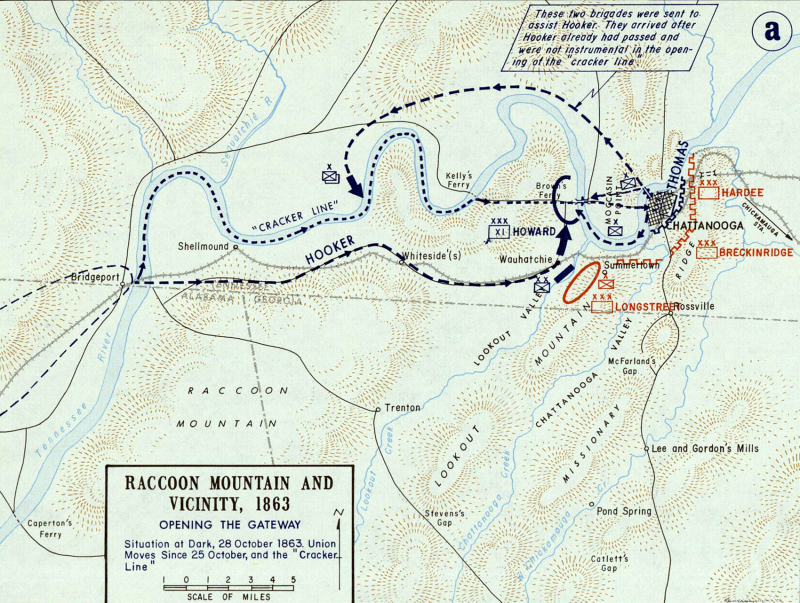
Source: historyofwar.org 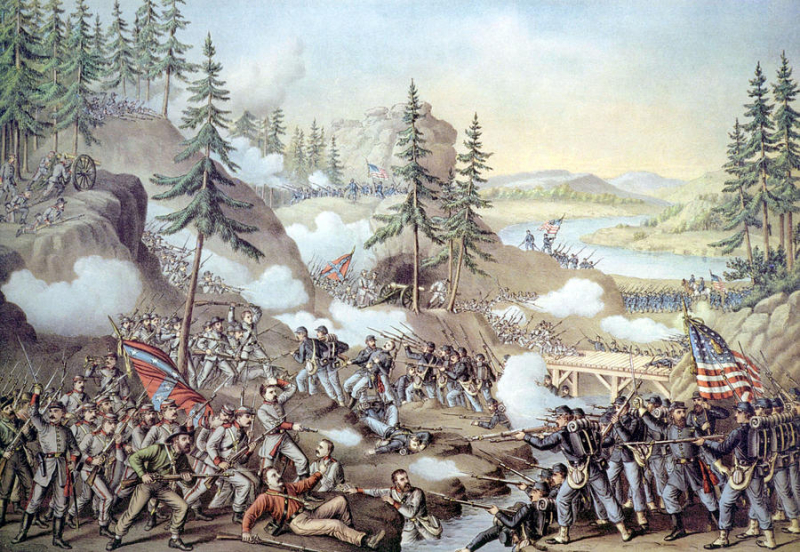
Source: chattanoogapulse.com -
Braxton Bragg commanded the Confederate Army of Tennessee at the battle of Chickamauga and the battles for Chattanooga. He was a graduate of West Point (Class of 1837), a Seminole War veteran, a distinguished veteran during the Mexican-American War, and a long-standing United States Army officer. On November 3, General Bragg announced that he would send General James Longstreet and his two divisions to Knoxville, Tennessee to inspect the activities of Union forces under General Ambrose Burnside. This movement seriously weakened the encirclement line of the Confederates. The Bragg’s forces further weakened his line on 22 November by sending troops under General Simon Bolivar Buckner and General Patrick Cleburne - his best divisional commander - to support Longstreet. However, as Grant began to move, Bragg called Cleburne back to his line to help defend against the Confederate attack.
Although the Army of Tennessee had about 52,000 men at the end of July, the Confederate government merged the Department of East Tennessee, under Maj. Gene. Simon B. Buckner, into Bragg's Department of Tennessee, which added 17,800 men to Bragg's army, but also extended his command responsibilities northward to the Knoxville area. After the battle, Rosecrans's Army of the Cumberland retreated to Chattanooga, where Bragg’s forces laid siege to the city. He began to wage a battle against the subordinates he resented for failing him in the campaign—Hindman for his lack of action in McLemore's Cove, and Polk for delaying the morning attack Bragg ordered on September 20. Longstreet was dispatched with his corps to the Knoxville Campaign against Ambrose Burnside, seriously weakening Bragg's army at Chattanooga. This is one of the facts about the battle of Chattanooga.
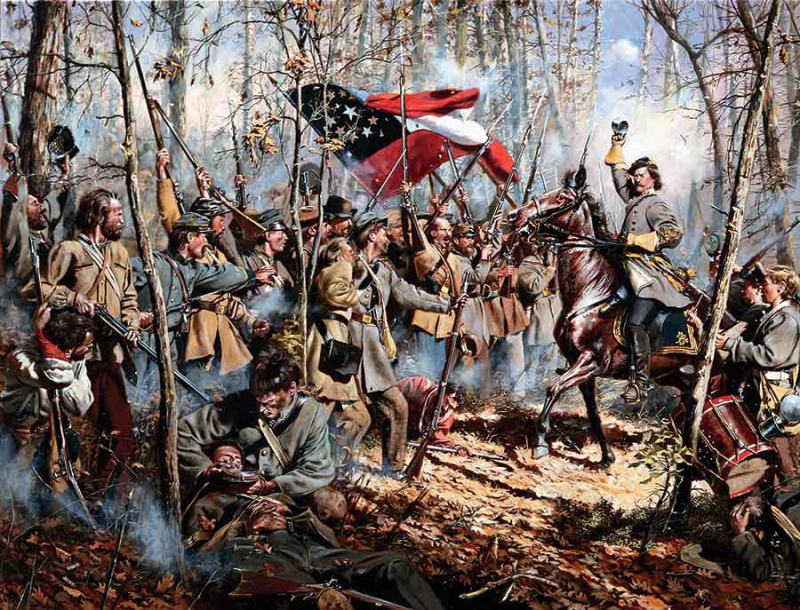
Source: wondriumdaily.com 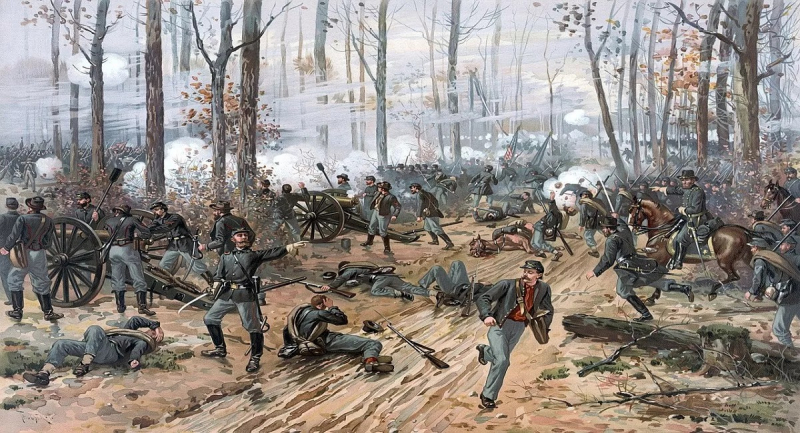
Source: wondriumdaily.com -
The battle of Chattanooga consisted of three separate battles fought over three days in November 1863. The three battles were the battle of Orchard Knob, the battle of Lookout Mountain, and the battle of Missionary Ridge. However, if all went according to Grant's plan, the fighting of the past two days would have been in a single focused attack on the entire Confederate line. On Monday afternoon, November 23, 1863, Union troops under the command of General George H. Thomas formed battle lines in an open valley between the city of Chattanooga and a rocky mound, known as Orchard Knob, to the east. Confederate sentries atop Orchard Knob anxiously watched as the Union lines moved into a parade-like formation in front of their positions. The battle of Lookout Mountain also known as the Battle Above The Clouds was fought on November 24, 1863, as part of the Chattanooga Campaign of the American Civil War. The battle on Missionary Ridge was fought on November 25, 1863, as part of the Chattanooga Campaign of the American Civil War. Following the Union victory in the Battle of Lookout Mountain on November 24, Union forces in the Military Division of the Mississippi under Maj. Gene. Ulysses S. Grant assaulted Missionary Ridge and defeated the Confederate Army of Tennessee, commanded by Gen. Braxton Bragg, forcing it to retreat to Georgia.
These three separate battles contribute greatly to the meaning and are one of the facts about the battle of Chattanooga. Although the Orchard Knob was a minor skirmish, it showed Grant that Bragg's army was still a fighting force capable of fighting and helped Bragg realize that he should be concerned about the possibility of a Union attack on his line. On November 25, Orchard Knob became General Grant's forward observation post as he watched the Confederate assault on Missionary Ridge. Missionary Ridge was so named for the early missionaries who made their way along paths climbing the ridge on their way to Brainerd Village to the settlement of the Cherokee. It was also referred to as "Mission Ridge" in the early years. The southernmost end of the ridge extends into Georgia.
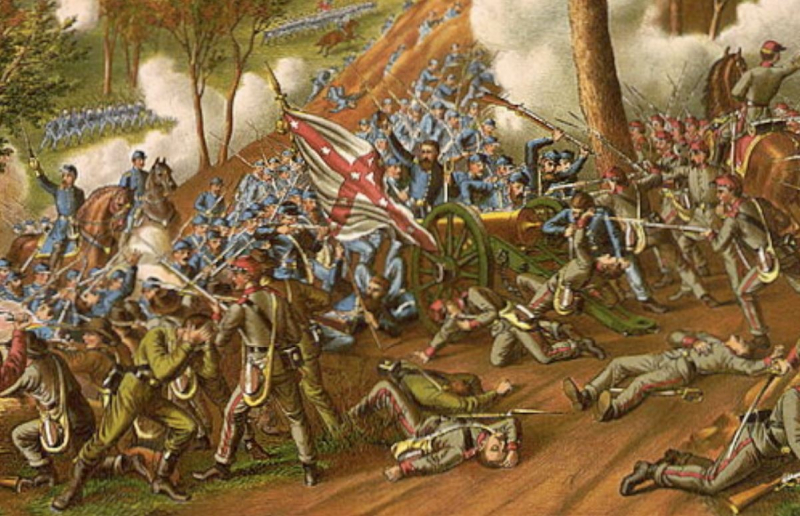
Source: civilwarmonths.com 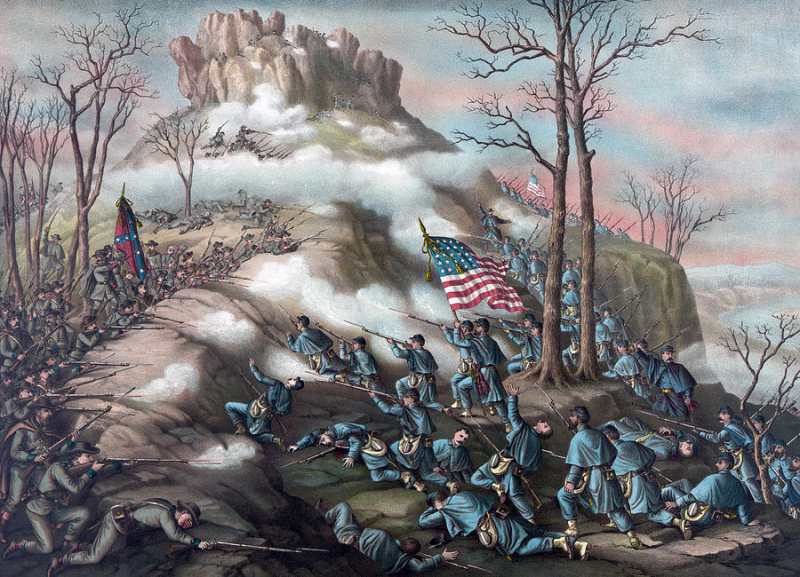
Source: civilwaronthewesternborder.org -
The Battle of Lookout Mountain also known as the Battle Above The Clouds was fought on November 24, 1863, as part of the Chattanooga Campaign of the American Civil War. Union forces under Maj. General Joseph Hooker assaulted Lookout Mountain, Chattanooga, Tennessee, and defeated Confederate forces commanded by Carter L. Stevenson. Lookout Mountain was one engagement in the Chattanooga battles between Ulysses S. Grant's Military Division of the Mississippi and the Confederate Army of Tennessee, commanded by Braxton Bragg. It drove in the Confederate left flank and allowed Hooker's men to assist in the Battle of Missionary Ridge the following day, which routed Bragg's army, lifting the siege of Union forces in Chattanooga, and opening the gateway into the Deep South. This is considered one of the facts about the battle of Chattanooga.
Battle of Lookout Mountain, on November 24, "Fightin'" Joe Hooker began attacking the remaining Confederates at Lookout Mountain. Grant did not initially consider using Lookout Mountain a priority; however, at the time of the attack, Grant had instructed Hooker to capture Lookout Point, the summit, if that was possible. Hooker had three divisions under the command of Brigadiers John W. Geary, Charles Cruft, and Peter J. Osterhaus. From 9:30 to 10:30, Geary's skirmishers make their way through thick fog and mist. Geary's men contacted the Confederate Brig. General Edward Walthall's men were a mile southwest of Lookout Point. The Confederates found themselves outnumbered and were quickly repulsed. Geary pursued the Rebels as they retreated, eventually meeting Walthall's reserve force at 11:30 outside Craven House. The inferior reserves could not match Geary's and were quickly dispersed despite Walthall's best efforts to rally his troops. The chaotic retreat of the Rebels not only cleared the way for the Confederates to advance but also rendered Confederate guns useless as the attempt to fire on Confederate soldiers could also result in the deaths of the Confederates.
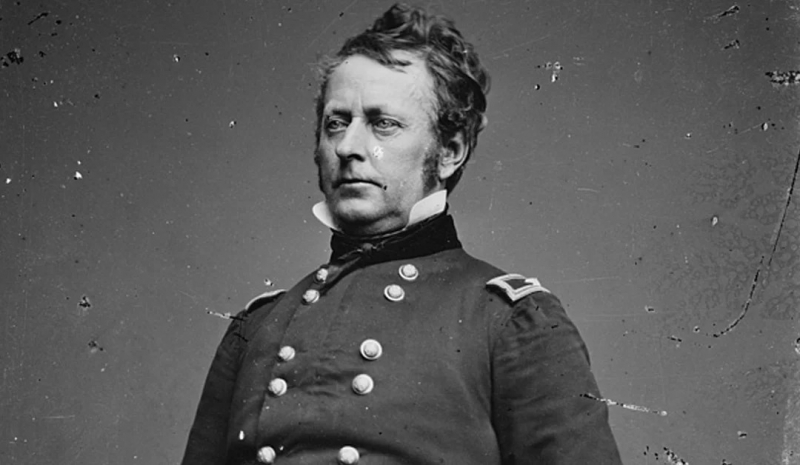
Source: americanhistorycentral.com 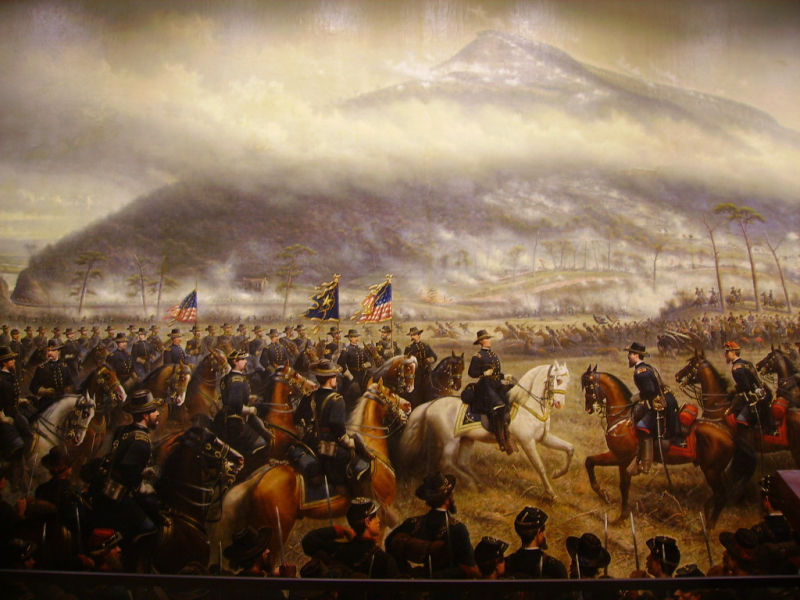
Source: loc.gov -
By 3 PM on November 25, General Grant became concerned about the fate of Sherman north of Missionary Ridge. Realizing he was in trouble and the Confederacy had only hours to win, Grant called General Thomas J. Wood of General Thomas's 4th Army carried gun holes at the foot of the mountain. Grant hoped that such a demonstration would put enough pressure on Bragg to send troops from his right to the center to secure the rifle pits, easing the pressure on Sherman's men. After Wood's men captured the rifle pits, they realized that they would not be able to stay there without being destroyed by Confederate artillery. Despite orders to hold their position, Union troops began advancing on Missionary Ridge. The Union troops fought the Confederate artillery fire with great force, as they were contained for most of the battle. As the Confederates battled the fortifications, the Confederate forces began to retreat, and eventually, Bragg's center of defense was completely breached by the Confederate advance.
Regarding Missionary Ridge, what was originally meant to be a rally to help Sherman win the north, turned into what one officer called the greatest spectacle. In fact, Grant's three major victories at Orchard Knob, Lookout Mountain, and the Confederate heart of the Confederacy were all planned rallies purely by raids, while the attack was planned. His plan at Tunnel Hill failed. Ulysses S. Grant assaulted Missionary Ridge and defeated the Confederate Army of Tennessee, commanded by Gen. Braxton Bragg, forcing it to retreat to Georgia. Missionary Ridge was so named for the early missionaries who made their way along paths climbing the ridge on their way to Brainerd Village to the settlement of the Cherokee. It was also referred to as "Mission Ridge" in the early years. The southernmost end of the ridge extends into Georgia. This is an indispensable fact in the list of facts about the battle of Chattanooga.
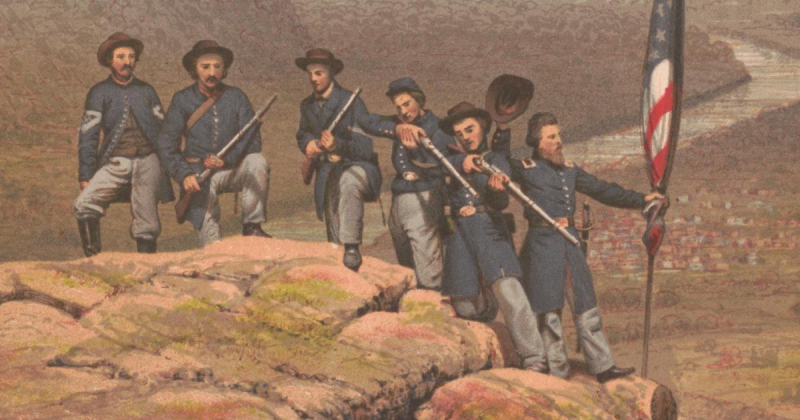
Source: sonofthesouth.net 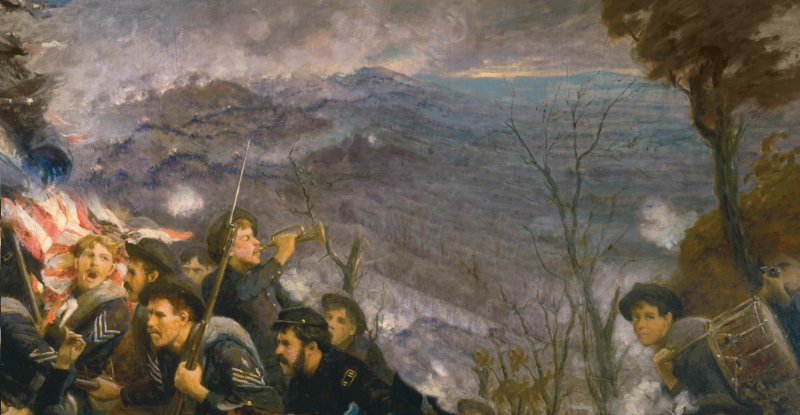
Source: wearethemighty.com









